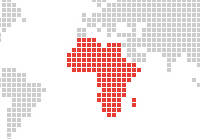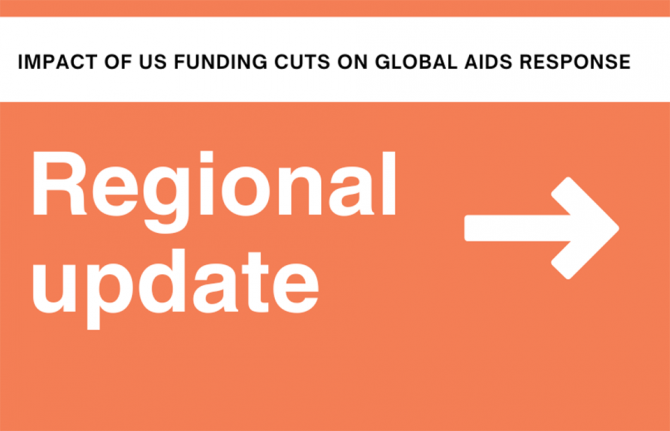
Feature Story
The AIDS response: Relationship to development in Africa
22 September 2008
22 September 2008 22 September 2008
The AIDS response: Relationship to development in Africa
As high-level participants and international experts gather to discuss Africa’s development needs and challenges at UN headquarters in New York on 22 September, we take a look at how HIV and the AIDS response is impacting development on the continent.
In countries in Africa most heavily affected by HIV, the epidemic has reduced life expectancy by more than 20 years, slowed economic growth and deepened household poverty. However effective, sustainable AIDS responses offer an opportunity to overturn the critical development challenges to overcoming poverty, improving education, extending life expectancy and reducing child mortality.
Development needs leveraged through AIDS leadership
When committed national leadership on AIDS is combined with long-term coordinated financing, dividends beyond the epidemic are being seen in Africa. Scaling up HIV services means addressing years of under-investment in health human resources in resulting in strengthened health systems which lead to improved maternal and child health. As individuals benefit from antiretroviral treatment, they live longer and their labour productivity rises, lifting households from poverty and improving food security for their families.
“How we fare in fighting AIDS will impact all our efforts to cut poverty and improve nutrition, reduce child mortality and improve maternal health, curb the spread of malaria and tuberculosis.” - United Nations Secretary-General Ban Ki-Moon speaking at the General Assembly High Level Meeting on HIV/AIDS, New York, June 2008
In addition, an AIDS response that addresses deep seated drivers or causes of vulnerability to HIV infection—stigma, discrimination, gender inequality and human rights—will impact wider development.
Successes and progress
Affected countries in Africa are showing strengthening leadership in addressing challenges by increasing the use of their own resources. The per capita domestic public HIV expenditure (from governments’ own sources) in sub-Saharan Africa was six times greater than other parts of the world after adjusting by income level (2008 Report on the global AIDS epidemic).
The substantial increases in AIDS funding and the investment in prevention and treatment of recent years are producing encouraging results in a number of countries in Africa.
In Rwanda and Zimbabwe changes in sexual behaviour—waiting longer before becoming sexually active, having fewer multiple partners, increased condom usage among people with multiple partners—have been followed by declines in the number of new HIV infections. Condom use is increasing among young people with multiple partners in Benin, Burkina Faso, Cameroon, Chad, Ghana, Kenya, Malawi, Namibia, Uganda, Tanzania and Zambia.
HIV epidemics in Malawi, South Africa and Zambia appear to have stabilized and most of the comparatively smaller HIV epidemics in West Africa are stable or are declining, as is the case for Burkina Faso, Cote d’Ivoire, Mali and Nigeria. HIV prevalence in HIV epidemics in East Africa have either stabilized or are receding.
Gains in access to antiretroviral treatment
More people have access to HIV treatment than ever before. Of the 3 million people who received HIV treatment in 2007, more than 2 million of them are in sub-Saharan Africa. In the period 2003 to 2007, Namibia scaled up treatment from 1% to 88%, Rwanda from 3% to 71%. As a result we’ve seen number of AIDS-related deaths decline over the past two years from 2.2 million to 2 million in 2007.
This is paying incalculable dividends for African countries. HIV treatment means that HIV-positive people are living longer, in better health and with a higher quality of life. They can continue to be productive within their workplace and community and there is less risk of their household falling into poverty and food insecurity.
Good progress has also been made in the prevention of mother-to-child transmission of HIV with increases in coverage of services in countries including Botswana, Namibia, Swaziland and South Africa.
This progress suggests a return on the investments made on different fronts, particularly in HIV prevention and treatment, and shows that with continued commitment, countries can overcome the development challenge that the epidemic poses.
Demographic impact of HIV
However, in spite of successes the epidemic continues to outstrip the response. The 2008 report on the global AIDS epidemic released by UNAIDS shows that AIDS continues to be the leading cause of death on the continent of Africa. In southern Africa, the average life expectancy at birth is estimated to have declined to levels last seen in the 1950s—below 50 years for the sub-region as a whole.
The numbers are stark: 67% of all people living with HIV and almost 90% of children living with HIV are in sub-Saharan Africa. In Botswana and Zimbabwe more than one third of all deaths in children under 5 are due to AIDS.
Progress, but gaps remain
As pointed out in the UN Secretary-General’s Report to the June 2008 High-level meeting on AIDS, countries need to sustain the progress that they have already made and continued leadership is required for the implementation of fully funded and sustainable national strategies and programmes on HIV.
HIV: A public health and a development issue
HIV is both a public health and a development issue which requires a sustained, inclusive and multi-sectoral response.
The Commission on HIV/AIDS in Africa (CHGA) issued a report earlier this year which included a call for leadership at all levels to be mobilized and coordinated for a concrete HIV response and broader development plan. The report also calls for addressing gender inequalities in national strategies as 60% of people living with HIV in sub-Saharan Africa are women.
High-level meeting on Africa’s development needs
At the high-level meeting on Africa’s development needs taking place in New York on 22 September, heads of State or Government, ministers as well as civil society organizations, intergovernmental organizations, UN agencies, funds and programmes, as well as the Bretton Woods institutions will gather to discuss “Africa’s development needs: State of implementation of various commitments, challenges and the way forward.” The meeting will conclude with the adoption of a Political Declaration. UNAIDS Secretariat, its cosponsors and partners will host a series of side events.



